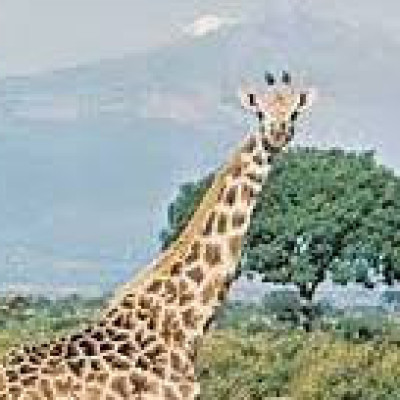The Majestic Giraffe: Nature's Tower
The giraffe, with its towering neck and distinctive spotted coat, stands as one of the most iconic and graceful creatures in the animal kingdom. Found in the savannas and grasslands of Africa, these gentle giants captivate the imagination with their unique appearance and fascinating behavior. In this article, we delve into the world of giraffes, exploring their physical characteristics, behavior, and the crucial role they play in the ecosystems they inhabit.
Physical Characteristics:
The giraffe, scientifically known as Giraffa camelopardalis, is easily recognizable by its long neck, ossicones (horn-like structures on the head), and distinctive coat pattern. The giraffe's neck, which can reach up to 18 feet in length, is a marvel of nature and serves various purposes. Contrary to popular belief, the giraffe has the same number of neck vertebrae as most mammals, but each vertebra is exceptionally elongated.
The giraffe's coat features irregularly shaped spots that can range from light tan to dark brown, providing effective camouflage in the dappled sunlight of their natural habitat. The ossicones, present in both males and females, are bony protrusions covered in skin and hair. Males typically have larger and more noticeable ossicones than females, and they use them in sparring contests for dominance.
Behavior and Social Structure:
Giraffes are social animals that live in loose groups called towers. These towers are not fixed and can vary in size and composition, with individuals coming and going as they please. Within a tower, giraffes may form smaller subgroups based on age, gender, or family relationships.
The giraffe's long neck serves several purposes. It enables them to reach high branches for food, making them primarily browsers. Additionally, the giraffe's height gives them an advantage in surveying their surroundings for potential predators. Despite their formidable appearance, giraffes are generally gentle creatures, relying on their powerful legs and swift running ability to escape threats.
Reproduction and Life Cycle:
Female giraffes, known as cows, give birth to a single calf after a gestation period of about 15 months. The calves are already around six feet tall at birth and can stand and walk within a few hours. Mother giraffes are highly protective and attentive to their offspring, guiding them through the first vulnerable months of life.
Conservation Status and Threats:
While giraffes are not currently listed as endangered, their populations have faced declines in recent years due to habitat loss, poaching, and human-wildlife conflict. Conservation efforts are crucial to ensure the long-term survival of these magnificent creatures. Organizations around the world are working to protect giraffe habitats, monitor populations, and raise awareness about the importance of preserving these iconic animals.
Conclusion:
The giraffe's towering presence on the African savannas symbolizes the beauty and diversity of the natural world. From their distinctive appearance to their social dynamics and vital ecological role, giraffes are truly remarkable creatures. As we appreciate their uniqueness, it is essential to recognize the challenges they face and actively contribute to their conservation. Only through collective efforts can we ensure that future generations will continue to marvel at the sight of these gentle giants roaming the African landscape.


As DigiComMa
Delete Comment
Are you sure that you want to delete this comment ?
Nazaqat nazaqat
Delete Comment
Are you sure that you want to delete this comment ?